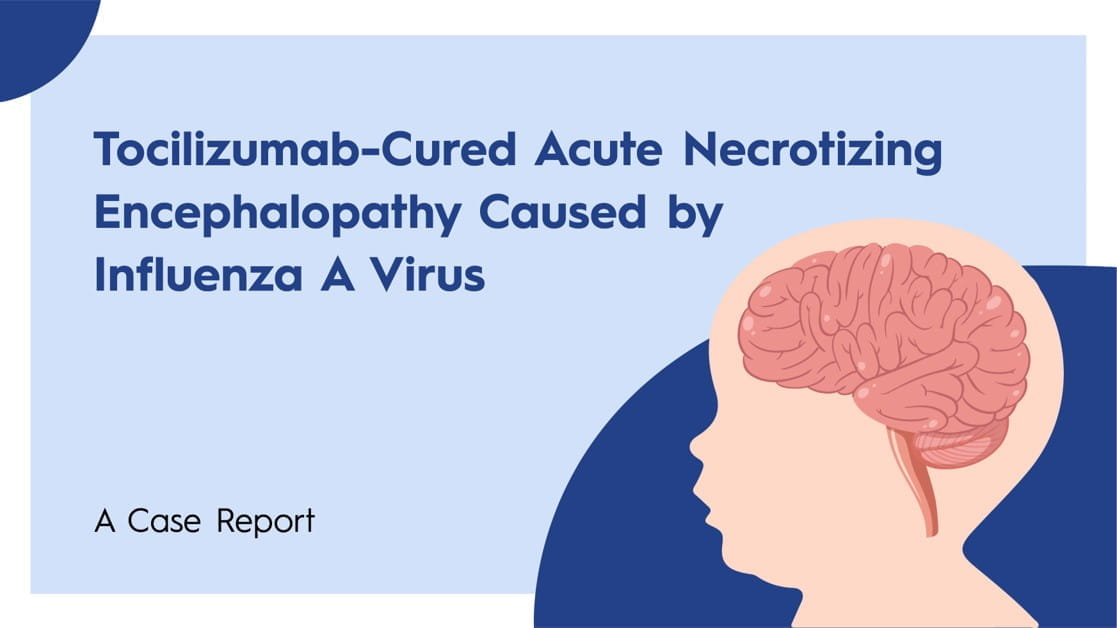ESPID 2024: Research Session: Complications and Controversies: UTI Controversies: Already in the Definitions- Manolis Galanakis
Urinary tract infections (UTIs) are the most common bacterial infection in young children, toddlers, and babies up to two years old. Symptoms differ and are difficult to identify, especially if children are not toilet trained. The traditional assumption that many UTIs lead to renal scarring and chronic kidney disease has been questioned recently, as scarring is now believed to be congenital in origin. Guidelines have been developed to address these issues, but none are well-established. The series of guidelines started with the National Institute for Health and Care Excellence (NICE) guidelines in 2007 and has evolved over the years, with new guidelines added by the European Association of Urology, Spanish Association of Pediatrics, and ESPID.
Diagnosing UTIs in children is challenging due to the lack of clear, universally accepted criteria, leading to significant clinical uncertainty. Unlike other bacterial infections, it is difficult to determine whether bacteria in urine cultures indicate true infection or colonization. Guidelines for diagnosing UTIs vary in sampling techniques and bacterial thresholds, causing confusion and inconsistencies. Traditional thresholds, often based on studies involving adults and pregnant women, range from 1,000 to 100,000 colony-forming units (CFUs) per ml, but their applicability to children is debated. Adjusting these thresholds impacts sensitivity and specificity, further complicating diagnosis. The variability in UTI presentations across different ages and genders, combined with these diagnostic challenges, underscores the need for more research and standardized pediatric-specific guidelines.
Innovative Diagnostics for UTI- Liat Ashkenazi-Hoffnung
Diagnostic tests for UTIs have not significantly evolved over the past fifty years, with urine culture still being the gold standard despite its long result times and limited specificity. Urinalysis also has a limited positive predictive value. In a scenario involving a four-year-old girl with a UTI and a history of antibiotic-resistant E. coli, physicians were asked to choose a treatment based on traditional methods and rapid diagnostics. Most initially preferred nitrofurantoin. When provided with rapid test results indicating the E. coli's resistance profile, more physicians favored nitrofurantoin, highlighting the impact of rapid diagnostics on treatment choices. Studies have shown that rapid point-of-care tests reduce the use of ineffective antibiotics and promote narrow-spectrum agents. Innovative tests, such as the Estratego P100 analyzer, can provide antimicrobial susceptibility results within 45 minutes, offering significant potential for clinical impact and aiding in the fight against antimicrobial resistance.
The Ludestar DX UTI test system, funded by the Longitude Prize on Antimicrobial Resistance in 2016, identifies six common bacteria within 40 minutes. Another test provides results in two minutes but only indicates the presence of bacteria without species identification or antibiotic susceptibility. The UTRiPLEX test, unique for detecting host biomarkers rather than pathogens, delivers results in six minutes but lacks company data on its efficacy. While these rapid point-of-care tests offer quick results, only the first provides susceptibility profiles, and two are awaiting regulatory approval. However, a prospective study in Belgium showed suboptimal sensitivities for the UTRiPLEX and Uroscreen tests in febrile children, with 21% and 67% sensitivity, respectively. A systematic review and meta-analysis, published in February 2024, revealed insufficient evidence to support the use of these rapid tests due to limited studies, modest sensitivity and specificity, and high or unclear risk of bias. Most evaluations were conducted in lab settings, potentially overestimating accuracy, and culture alone was the reference standard, which can result in false positives. Consequently, the review concluded that current rapid tests for UTI diagnostics are not yet clinically reliable.
To address overdiagnosis in urine cultures, a prospective study on urinary biomarkers was conducted, using an expert panel to review clinical data and assign final diagnoses, distinguishing between viral infections and UTIs. The study found high levels of urinary C-reactive protein and C-reactive protein Interferon gamma inducible protein-10 (CRP IP-10) in UTI cases, indicating potential for these biomarkers in future diagnostics. When surveyed, most respondents identified the need to differentiate true UTI from asymptomatic bacteriuria as the most urgent diagnostic improvement. Expert committees agree, emphasizing that a reliable test for this differentiation is crucial to avoid unnecessary antibiotic use. Rapid detection and antimicrobial susceptibility testing (AST) within 20 minutes are also deemed essential. Although innovative tests like diaper-embedded urine tests are in development, there is insufficient evidence to support their clinical use. Further research is needed to evaluate these tests' accuracy, clinical impact, and cost-effectiveness, with a focus on developing rapid diagnostics to distinguish between true UTI and asymptomatic bacteriuria.
Research Session: Models for Predicting Pathogen’s Resistance in UTI - Emmanouela Maltezaki
Pathogen resistance, particularly in gram-negative bacteria causing UTIs, poses a significant challenge for clinicians, with an estimated 10 million deaths annually related to antimicrobial resistance by 2050. Predictive models, leveraging artificial intelligence, have been used over the past decade to predict antimicrobial resistance in UTIs, aiding in diagnosis, therapeutic decisions, and outcome predictions. These models have evolved from simple statistical methods to advanced AI techniques. Predictive models are crucial in clinical practice for decision-making, selecting effective treatments, and reducing mortality and morbidity. However, they require better validation datasets, raise ethical concerns, and cannot fully replace human judgment. There are two main approaches to predicting antimicrobial resistance: using a patient's prior history or genome sequencing data of pathogens. The first approach, which is more applicable in clinical practice, employs models like logistic regression, decision trees, random forests, XGBoost, and neural networks.
Researchers have developed predictive models to anticipate antimicrobial resistance in urinary tract infections (UTIs), addressing a critical challenge in clinical practice. Two studies, one from Galway and another from Korea, utilized decision tree and gradient boosted decision tree approaches, respectively, to predict resistance to common antibiotics like nitrofurantoin and ciprofloxacin, achieving high accuracy rates of 97% and 80%, respectively. These models have broader applications beyond UTIs, extending to bloodstream infections, mycobacterial species, and Neisseria gonorrhea. However, limitations such as retrospective data collection, small datasets, and lack of generalizability underscore the need for further research with new algorithms and real-time predictions. Collaborative efforts and improved artificial intelligence education are vital for future advancements in predictive modeling, which can significantly aid clinicians in laboratory diagnostics, treatment selection, and overall management of UTIs, guiding empirical treatment and imaging decisions.
Controversies in Length of Treatment & Prophylaxis in UTI - Kalliopi Vardaki
In a clinical scenario featuring Bjorn, a five and a half-month-old boy with a suggestive urinary tract infection (UTI), the optimal treatment duration and prophylactic considerations are debated. Reviewing updated guidelines reveals varying recommendations, with durations ranging from seven to 14 days of treatment, depending on the source. Recent literature explores shorter treatment courses, aiming to minimize antibiotic exposure, with some studies suggesting five to seven days of treatment for pyelonephritis, even in cases of bacteremia. However, evidence on optimal treatment duration remains inconclusive, with retrospective analyses showing similar outcomes between longer and shorter treatment durations for uncomplicated UTIs. Prophylactic considerations further complicate the decision-making process, with differing practices among clinicians based on geographical location and institutional guidelines. The effectiveness of prophylaxis in preventing recurrent UTIs remains controversial, with studies showing conflicting results due to variations in study design and inclusion criteria. Overall, decisions regarding treatment duration and prophylaxis should be individualized, considering factors such as clinical presentation, patient characteristics, and risk-benefit analysis.
This systematic review and meta-analysis delved into various aspects of urinary tract infections (UTIs) and vesicoureteral reflux (VUR) in children, highlighting several key findings. Concerns were raised regarding the variability in VUR grading across studies, potentially impacting result quality. The meta-analysis revealed that the benefit of prophylaxis in preventing UTIs must be weighed against the risk of multidrug resistance, with a substantial number needed to treat to prevent one UTI. Studies suggested that prophylaxis may benefit children with VUR and bladder and bowel dysfunction but not those with isolated VUR or bowel dysfunction. Additionally, prophylaxis showed no significant benefit in preventing renal scarring, regardless of VUR presence. A notable trial indicated a reduced UTI risk in certain VUR grades but did not decrease renal scarring risk. Further research is warranted to explore optimal treatment durations, especially considering factors beyond treatment failure, and to evaluate prophylactic effects in neonates, infants, and specific subgroups such as immunocompromised children. Comparative studies are needed to assess prophylaxis effects on different VUR grades and its impact on renal scarring independently of UTI recurrence.
Pathogen-Host Interactions in Different Forms of UTI- Maria Bitsori
The diversity of UTI forms, including asymptomatic bacteriuria, sepsis, and recurrent infections, stems from three main factors: urine flow, pathogens, and host response. While defective urine flow, often linked to conditions like severe VUR or bladder and bowel dysfunction, is a significant risk factor, it alone cannot explain the varied nature of infections. Pathogens, with their virulence factors, also play a crucial role, but questions remain about their emergence and interaction with natural flora. Host response, albeit challenging to study, has provided intriguing insights into UTI diversity through experiments and molecular techniques.
Early animal studies identified the innate immune response as crucial in UTIs, outlining a two-step model involving bacterial adhesion, epithelial cell activation, and neutrophil recruitment for bacterial killing. Key molecules like TLR4, IL-8, and CXCR1 play pivotal roles in this process. Newer research has revealed additional molecular events before and after these steps, shaping the complexity of UTI pathogenesis. Antibiotics can inadvertently enhance intracellular bacterial survival, leading to recurrence. Genetic susceptibility to UTIs has been confirmed, with different genetic factors implicated in various UTI forms. TLR4, CXCR1, and ACE genes show consistent relevance. Understanding these genetic factors could revolutionize UTI diagnostics by identifying novel biomarkers, though challenges remain in determining their clinical utility and cost-effectiveness. Ongoing research aims to clarify the role of various molecules and refine diagnostic approaches for better patient outcomes.
In the realm of urinary tract infection (UTI) management, the pursuit of non-antibiotic treatments is gaining traction as a response to concerns over antibiotic resistance and limitations of conventional therapy. Among these alternatives, anti-inflammatory agents, anti-adhesive compounds, and immunomodulatory drugs show promise by targeting various aspects of UTI pathogenesis, from modulating inflammatory responses to impeding bacterial adhesion. Vaccines against UTI-causing pathogens, particularly Escherichia coli, offer prophylactic potential against recurrent UTIs, with ongoing efforts to adapt them for pediatric use. Additionally, strategies like bacterial interference and temporary gene blockade present innovative approaches to UTI treatment, albeit still in the research phase. While these novel treatments hold exciting prospects, their clinical utility and efficacy require further validation through rigorous research and collaborative efforts among researchers, clinicians, and industry partners. If successful, these non-antibiotic interventions could revolutionize UTI management, providing safer and more effective alternatives to traditional antibiotic therapy.
European Society for Paediatric Infectious Diseases (ESPID) 2024, 20th May 2024- 24th May 2024, Copenhagen




